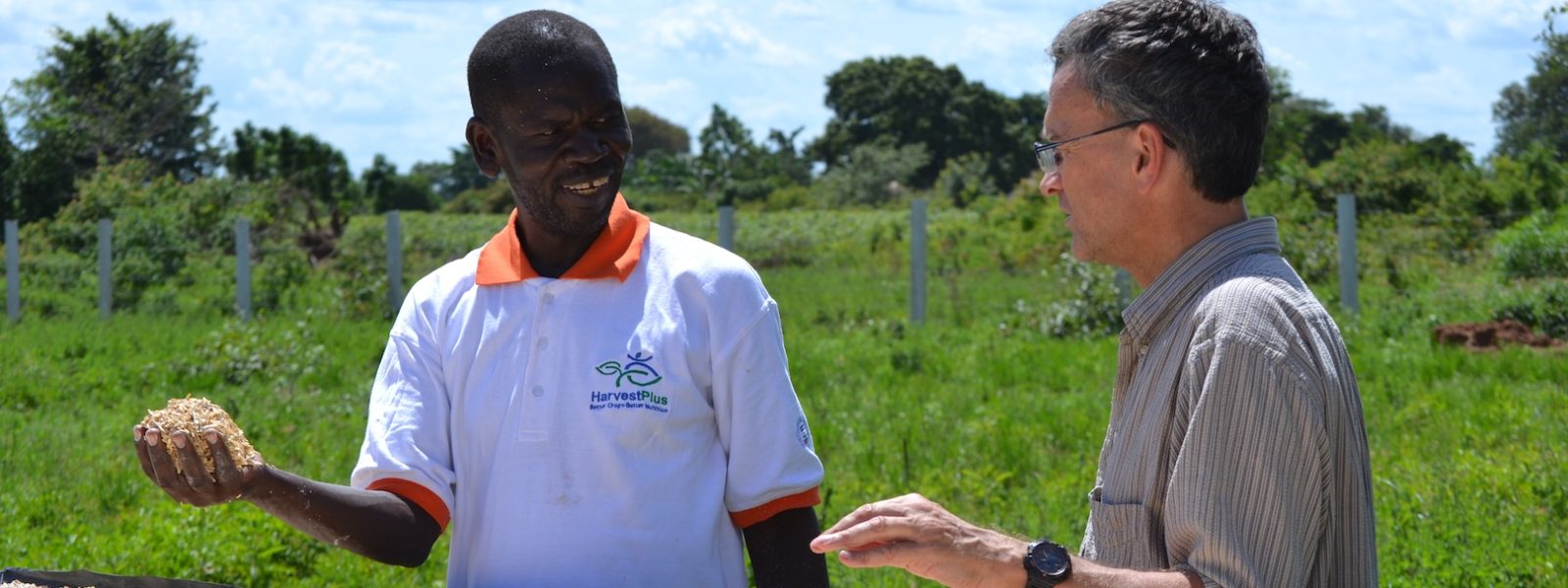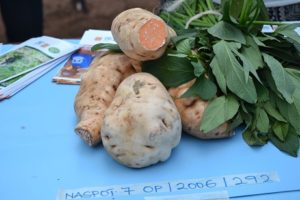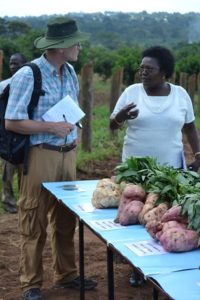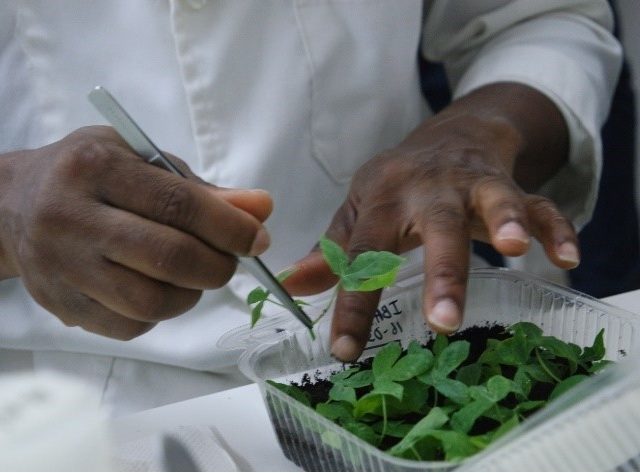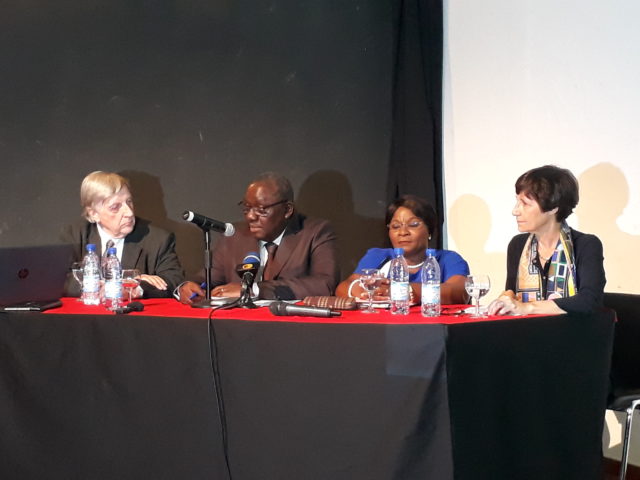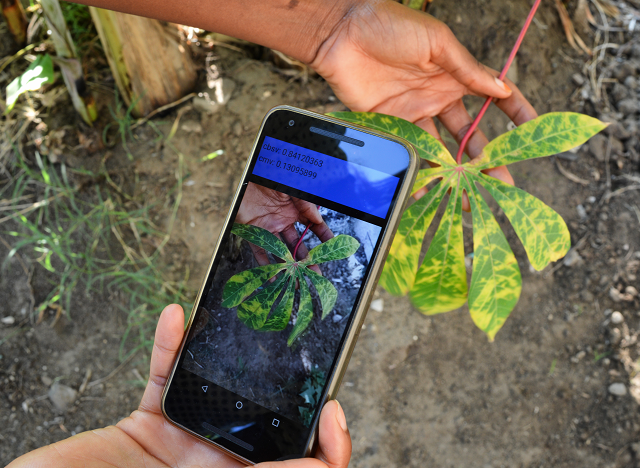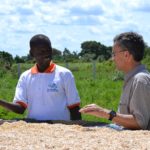 By Graham Thiele, RTB Director
By Graham Thiele, RTB Director
Uganda is a hub location for RTB with all our crops and projects of all four participating centers. So I was very glad to travel there in April to participate in the Global Musa Expert Workshop and lead a seminar for local partners and stakeholders called ‘RTB: Making it Work in Uganda’. I also spent several days traveling through the countryside to talk to researchers, extensionists and farmers and learn about the work of RTB with partners.
I saw cassava, sweetpotato and banana almost everywhere, potatoes in the highlands and yams and cocoyam on a couple of farms. Together with colleagues from CIP, IITA and Bioversity International I visited projects with partners and the Namulonge and Kawanda Research Stations of the National Agricultural Research Organisation (NARO) (see my full visit report).
One of my first stops was the office of the Akazalibwa Rural Agro-Processors and Trainers Association (RAPTA), in Iganga District, which has worked with IITA, I spent time with a smallholder group in Nakamini village composed of 21 women and 12 men. They explained to me that they had trouble getting good cassava planting material before working with RAPTA, which gave them material for several improved varieties that IITA had provided.
“They taught us good agronomic practices,” farmer Ibrahim Mayongole told me, before explaining that RAPTA also helped the group process cassava into flour, chips and gari. Unfortunately, cassava brown streak virus (CBSV) has destroyed much of their production since 2009, so they are now planting yams and sweetpotato. Mayongole also said that while enough cassava roots survive the disease for home use, the group would need CBSV-resistant varieties to resume commercial production.
I met with potato farmers in the highlands of Mbale District, where CIP and NAADS, the government extension service, have promoted clean seed systems and storage. Farmer groups there have organized seed production and storage, building diffuse light stores that can hold several tons of potato.
I also visited a highland farm in the Mount Elgon area, where IITA has worked to improve a local cropping system that uses banana to shade coffee. The banana shade improves the coffee quality by slowing bean maturation, while providing food and cash between coffee harvests. IITA provided clean banana seed and recommendations for fertilizing and managing both crops as a system to optimize their production.
I was particularly pleased to see the level of involvement of women in the groups and research centers I visited – from extensionist Grace Babirye to farmer Christine Wakabi to sweetpotato breeder Dr. Gorrettie Ssemakula, of the National Crops Resources Research Institute (NaCRRI).
Grace Babirye is the coordinator for VEDCO, a non-governmental organization in Mukono District collaborating with CIP in a HarvestPlus project that trains trainers in the multiplication of sweetpotato vines linked to nutrition training to promote orange fleshed sweetpotato (OFSP). Each farmer who receives 15 kg of vines commits to providing the same amount of vines to two other farmers. This year, the project should reach 1,800 farmers directly plus 3,600 farmers indirectly in Mukono and 50,000 countrywide
Christine Wakabi, who lives in the village of Buyuki, is another of those outstanding women farmers. She grows various sweetpotato varieties, including Silk, Bunduguuza and Mulu Aduduma, as well as rice, as cash crops. She sells most of her harvest at a market in Kampala, though she also sells some sweetpotatoes to local vendors and some vines to her neighbors.
To reach more women, both as partners and end users, is an important aspect of RTB’s and HarvestPlus work, and indeed what I saw in Uganda is very encouraging.
I visited the BioCrops facility, a nascent private sector investment producing quality seed of OFSP and other crops using tissue culture. And saw their OFSP planting material in field multiplication with the SSOSPA farmers’ group in Serere District. This was supported by the HarvestPlus project to provide farmers with clean seed using market mechanisms. CIP’s involvement contributes to a shared impact pathway for improved OFSP varieties from the RTB program.
At the NaCRRI’s Namulonge experimental station, Dr. Gorrettie Ssemakula explained to me the crossing block with OFSP, including virus resistance and Dr Robert Mwanga showed us one of the two CIP/NaCRRI crossing blocks intercrossed to maximize hybrid vigour. I also saw how CIAT and the Danforth Center are collaborating with NaCCRI to accelerate cassava breeding and IITA and Cornell are collaborating to increase beta-carotene (pro-vitamin-A) and dry matter in cassava varieties.
At the Kawanda Experimental Station, scientists from NARO detailed their efforts to incorporate resistance to weevils, black sigatoka, nematodes and the bacterial disease banana xanthomonas wilt, in collaboration with both Bioversity International and IITA.
Partnerships are crucial for meeting the triple challenge of quality, quantity and timeliness of planting materials, and improving both the production and consumption links of the value chain in order to manage the high perishability of RTB crops. I was glad to see that RTB is facilitating more such collaboration amongst a growing network of partners.
